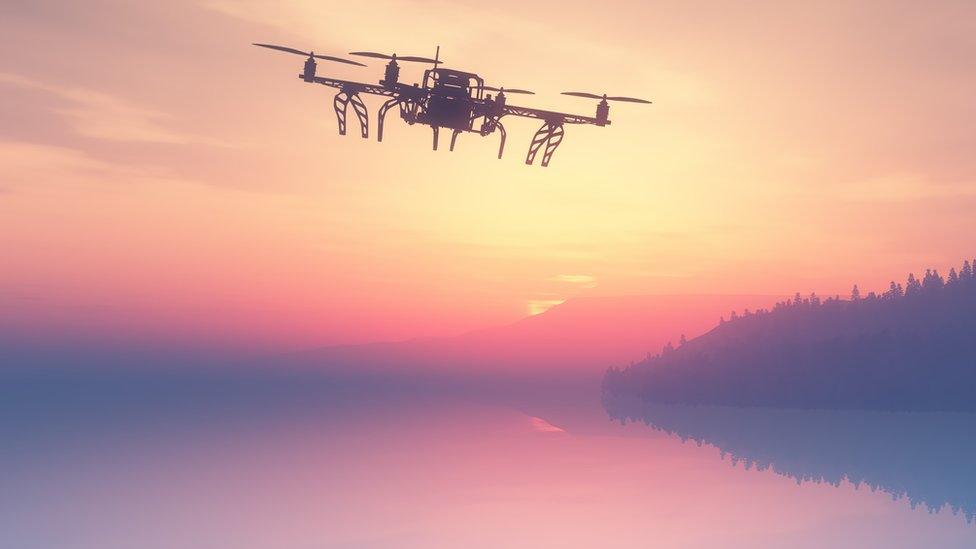Gatwick airport: How can a drone cause so much chaos?
- Published
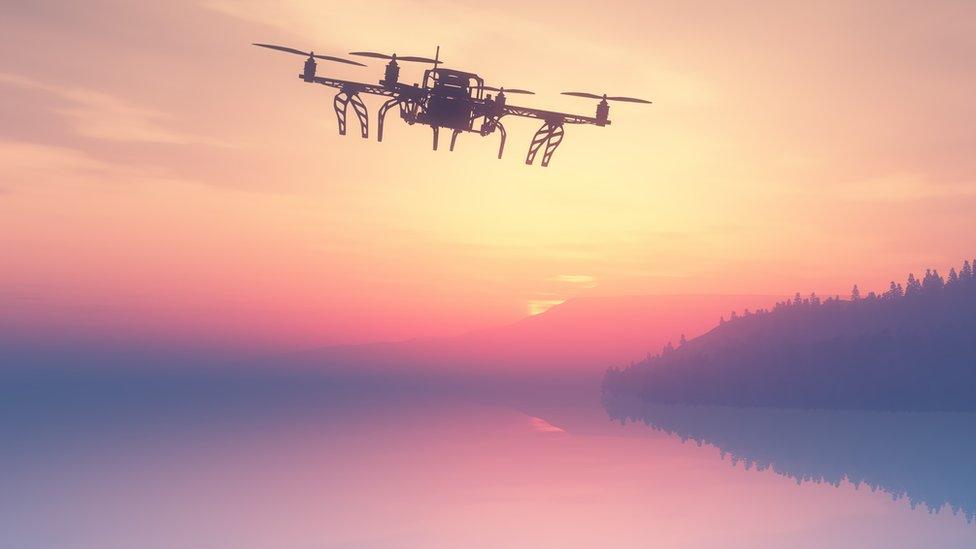
As drones become more popular, countries will need to consider regulations to restrict usage
Gatwick Airport re-opened its runway on Friday morning after hundreds of flights were grounded due to a drones being spotted over the airfield on Wednesday and Thursday.
So why has a drone caused so much disruption and what are the risks posed by these devices?
What is a drone?
The term "drone" for some prompts images of air strikes - but the sophisticated flying robots used on the battlefield are unlikely to be what we are talking about here.
The vast majority of unmanned aerial vehicles are actually small, remote-controlled quadcopters used by hobbyists and photographers.
These small devices are now a mainstream gadget, which can cost from under £40 to several thousands of pounds.
Drones are also increasingly being used in industries such as construction and retail.
What damage can a drone cause an aircraft?
In October 2017, a drone collided with a commercial aircraft in Canada, striking one of the plane's wings. The plane sustained minor damage but was able to land safely.
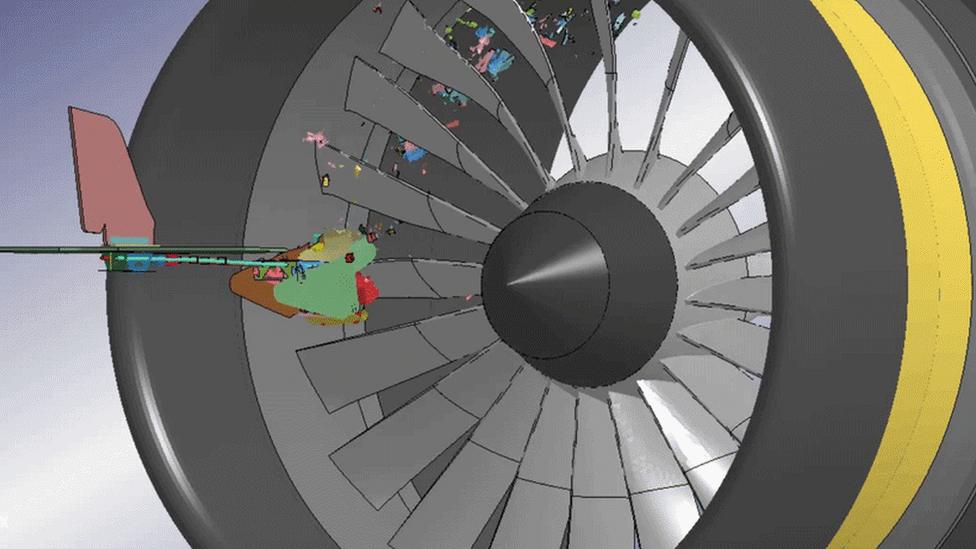
Experts agree that a drone could damage an aircraft
Research on drone damage to aircraft is still limited but a number of institutions have tested a variety of impact scenarios and each seems to reach a different conclusion.
Tests conducted at the University of Dayton, external in the US mimicked a midair collision between a 2.1lb (1kg) quadcopter and a commercial aircraft travelling at 238mph (383km/h) and appeared to show it inflicting major damage.
Other research from, external the Alliance for System Safety of Unmanned aircraft system through research Excellence (Assure) in conjunction with the US's Federal Aviation Authority suggested drones could inflict more damage than a bird collision and the lithium ion batteries that power them may not shatter upon impact, instead becoming lodged in airframes and posing a potential risk of fire.
Ravi Vaidyanathan, a robotics lecturer at Imperial College, London, told the BBC: "The threat posed to larger aircraft by drones is small but not negligible.
"The probability of a collision is small but a drone could be drawn into a turbine.
"A drone greater than 2kg might break the cockpit windshield as well for certain aircraft."

Martin Lanni, chief executive of airspace security company Quantum Aviation, said: "A drone looks quite fragile but the battery is hefty and if you compare a drone to a bird, then it could be potentially more dangerous if it goes through the engine or hits the fuselage."
According to the UK Airprox Board, there were 92 instances of aircraft and drones coming close to colliding in 2017.
How can airports protect themselves?
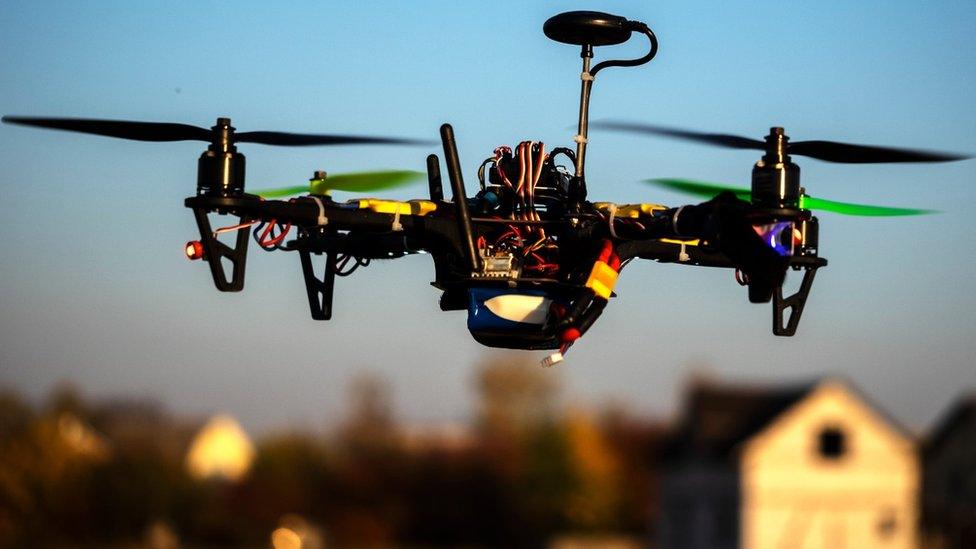
There were 92 instances of aircraft and drones coming close to colliding reported in 2017
In the UK, legislation came into force in July, making it illegal to fly a drone within 1km (0.62 miles) of an airport. It is also illegal to fly a drone higher than 400ft (120m).
But experts have pointed out that this could be ineffective, given that a landing aircraft would fly below 400ft. And of course those with malicious intent would have little regard for legislation.
Systems have been tested in some prisons, where drones are often used to smuggle in goods, which aim to block radio signals within a certain area in order to prevent drones from landing.
For airports serious about protecting themselves from drone attacks, there is the option of a more sophisticated, if expensive, system, such as that offered by Quantum Aviation, which employs radar, radio frequency detectors and cameras to detect when drones are nearby and locate where they came from.
"In an ideal world, you talk to a person but to do that you need to know where the drones are coming from," said Mr Lanni.
"What you don't want is to have them dropping out of the sky."
The Quantum Aviation system can "jam" a drone - effectively stopping it working - the drone should, in theory, have a default mode that would see it either return to where it came from or land safely.
DJI, the world leader in making civilian drones, introduced geo-fencing systems in its products in 2013.
This technology can prevent drones from flying in some locations and offers warnings to drone operators flying near a restricted zone.
How do you catch a drone?
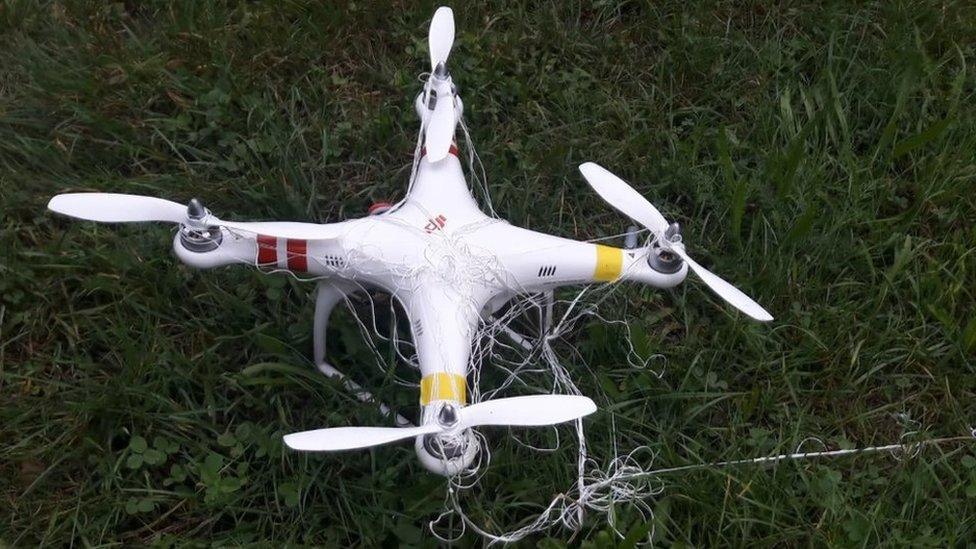
The weighted net entangles the drone and brings it to the ground
If jamming a drone or geo-fencing does not work, there are some more blunt instruments to bring down the devices.
The French authorities have demonstrated how you can use a drone equipped with a net to catch another one, and there are several firms, including DroneDefence and OpenWorks Engineering which offer to fire a net to trap a rogue drone.
Lasers are another option and both the US and China have experimented with anti-drone lasers, that can shoot down a drone within seconds of locating it.
The weapon works by fixing a laser beam on the aircraft long enough to burn through it.
Whatever happens in the case of the rogue drones at Gatwick, airports will now be forced to consider the issue more seriously, thinks Iain Gray, director of aerospace at Cranfield University.
"Airports are alive to the issues and want to work closely with academics to help shape the technology that is needed for the future," he told the BBC.
- Published5 December 2018
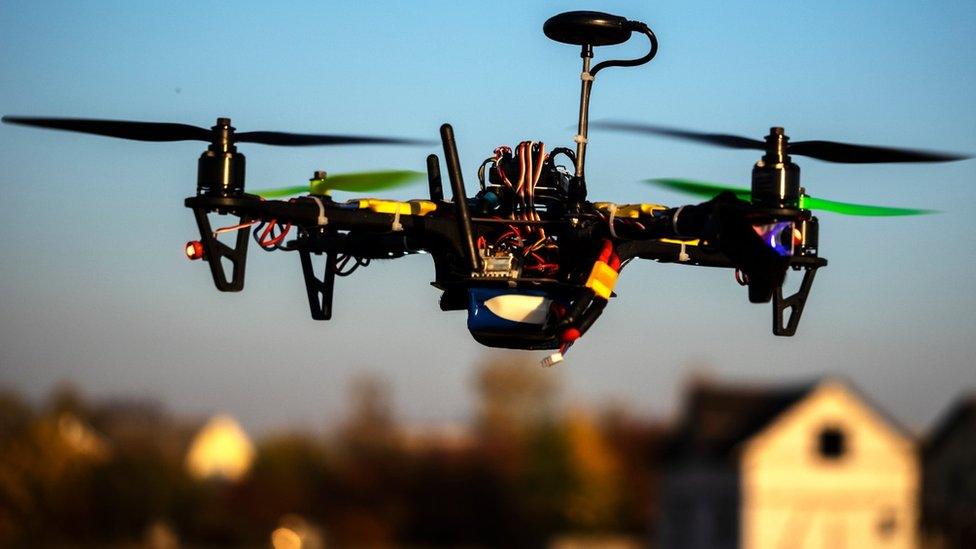
- Published16 October 2017
